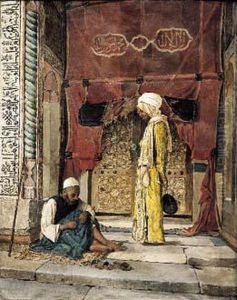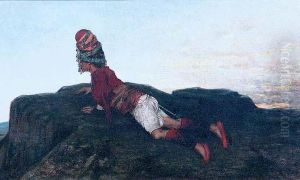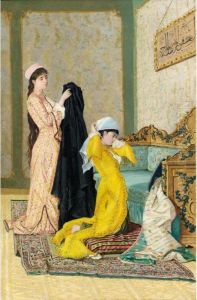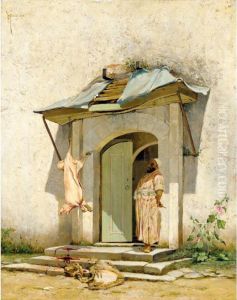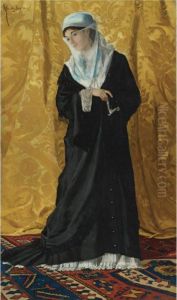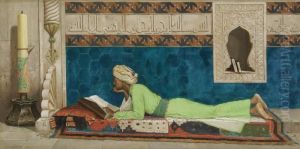Osman Pacha Zadeh Hamdy Bey Paintings
Hamdy Bey was a prominent figure in the late Ottoman Empire, known not only as an artist but also as an archaeologist, museum director, and art educator. Born in Istanbul to an influential Ottoman family, his father was Grand Vizier Ibrahim Edhem Pasha, who provided Hamdy Bey with a privileged education that included the fine arts, languages, and culture. His early exposure to European culture, combined with his Ottoman upbringing, gave him a unique perspective that he later incorporated into his art.
Educated in Paris, Hamdy Bey was significantly influenced by the academic art traditions of the 19th century. He studied under renowned artists like Gustave Boulanger and Jean-Leon Gerome, which is evident in his technique and the themes he explored in his paintings. His work often depicted historical and orientalist subjects, combining Western artistic principles with Eastern motifs. This blend of East and West made his artwork particularly appealing to both Ottoman and European audiences.
Upon returning to Istanbul, Hamdy Bey embarked on a career that would have a lasting impact on the cultural landscape of the Ottoman Empire. He became a pioneer in the field of museum curation and archaeology. In 1881, he took charge of the Imperial Museum (now the Istanbul Archaeology Museums), where he played a key role in modernizing the institution and elevating the status of historical and cultural artifacts within the Ottoman society. His efforts in organizing archaeological excavations and preserving the empire's heritage were groundbreaking.
As a painter, Hamdy Bey exhibited his work in various international exhibitions, including in Paris, Vienna, and Istanbul, where he received considerable acclaim. His paintings are characterized by their meticulous detail, vibrant colors, and the intricate interplay of light and shadow. Notable works include 'The Tortoise Trainer' and 'A Lady of Constantinople,' which showcase his ability to capture the essence of Ottoman life and customs.
Hamdy Bey's influence extended beyond his artistic and archaeological accomplishments. He was instrumental in the establishment of the Academy of Fine Arts in Istanbul, which helped nurture the talents of future generations of Ottoman artists. His dedication to education, art, and cultural preservation left an indelible mark on the cultural heritage of Turkey.
Hamdy Bey continued to paint, curate, and contribute to the arts until his death in 1910. Today, he is remembered as one of the most influential figures in the late Ottoman art scene, with his works held in high esteem and displayed in numerous galleries and museums around the world.
